© 2004, 2008, 2024 Jonathan Zap Edited
Note: This is not meant to be a serious meditation on 2012 but is more of a somewhat surreal journal entry describing a zone of heightened synchronicities, etc. To find out what I really think of 2012 read: Carnival 2012—a Psychological Study of the 2012 Phenomenon and the 22 Classic Pitfalls and Blind Spots of Esoteric Research
The Equinox party at the Circle A Ranch—a communal living situation created by young anarchists in the outskirts of Boulder, Colorado—was a magical nexus for me, one of those zones of heightened synchronicity where many threads of the great tapestry wove together into a pattern recognizable, even revelatory.
With a luck that felt almost uncanny, the unpredictable lottery of high desert weather had produced a glorious winner. The first day of spring turned out to be a preview of summer, and the unexpected warmth of the evening felt almost like an enchantment, an invitation into mystery.
The Circle A Ranch has an improbable location, surrounded by many acres of open fields, at the distant circumference of which were the twinkling lights of suburban houses and strip malls. It seemed to be placed at the center of this open space as if it was enclosed by an invisible dome, creating an oasis of green within a suburban landscape. There was an enormous fire pit, a crater in the ground that looked like the result of a small asteroid impact; people were drumming and dancing around a blazing fire. Next to the fire pit was a barn that was being used as the screen for surreal video projections. The barn looked like a dream cottage, intricately tie-died in a vat of electrical colors.
Inside the main house, I set up to do free I Ching readings and dream interpretation. One interesting person after another showed up, providing many fascinating moments. One of a pair of identical twins told me a dream reflecting the strange dynamics unique to twin psychology. Then, an eighteen-year-old male, we’ll call him Jeremy, showed up. I knew him slightly since we were both regulars at the same coffee shop, Cafe Solé, located in South Boulder.
Jeremy is a philosophy student with a brilliant mind for complex ideas. We discussed a number of interesting themes, many of which, I later realized, were directly related to a vortex of meaning and discovery that had already begun to pull me into its centrifugal spiral. After establishing some common ground in ideas, Jeremy related a recurrent dream that had haunted his childhood.
In the dream, he would always find himself at the bottom of a red pit, as a gigantic steamroller—a leviathan, as he described it—would be rolling toward him.
The dream, which could be contained in a single sentence, had a deceptive simplicity. The simplicity concealed a great density of meaning, which would continue to expand in my mind during the next twenty-four hours. At first, however, I saw the dream as archetypal and straightforward. A recurrent childhood dream will often, in my experience, map out the core situation of the dreamer’s incarnation.
The dream dramatically portrayed the self versus the collective. The self finds itself in a fallen world, a pit, and the collective, far more massive than the individual, is antagonistic to individual consciousness. It especially seeks to flatten what I call “mutants.” A mutant, as I use the term, is a mutagenic individual who lives outside of approved collective parameters and is in a state of heightened metamorphosis. You are more likely to find them among the young because the pressures of the collective steamroller have yet to press with enough force and time to flatten the young into the flattened outline of a person we call a normal adult. Particularly strong, young mutants can continue to grow and metamorphose into adulthood. Jeremy was clearly a mutant: his eyes had that iridescent afterglow; he emanated a large field of self-awareness and compassion, and there was about him the blue and indigo feeling of higher thinking and an older, spiritual nature.
Boulder has the highest per capita occurrence of mutants of any place I’ve ever encountered, and the Equinox party was a mutant nexus within Boulder. But even in such a mutant-intensive environment, Jeremy stood out as unusual. I thought I had perfectly comprehended the dream as the most familiar of themes—the mutant versus the machine/collective. The steamroller, as I pointed out to Jeremy, is a machine whose exclusive purpose is dimension reduction. The job of the steamroller is to take that which is three-dimensional and make it two-dimensional. And this is what the massive inertia of the collective baseline of consciousness seeks to do to the mutant—to flatten him into dimensional conformity, to make him part of the asphalt of flatland: a smooth surface that the big machinery can roll over with as little friction as possible. What an appropriate dream to encounter at a party put on by young anarchists!
I compared Jeremy’s position in the dream to the young man standing in front of the tank in Tiananmen Square. I pointed out a favorite saying in present-day Totalitarian China: “The nail which stands out gets pounded down.” I concluded by pointing out to Jeremy that it would be a mistake to perceive himself as a victim in this situation. What was needed was self-compassionate, courageous acceptance of his incarnation into this fallen world. I suggested that he consider this something he signed on to develop his awareness- boot camp for the soul.
Feeling I had satisfactorily interpreted this dream, I let Jeremy get back to the party while I got to the next patiently waiting person to work on his dreams. One person after another showed up for dream interpretation or I Ching. Inevitably, I hit walls of exhaustion with this; as an introvert, I can only take so much of the intensity of contact with another’s psyche in these consultations before I become burned out and have to get up and walk around to regain my equilibrium. These were also opportunities to experience the Equinox party, which impressed me with its positive vibe and mutant intensiveness. I’ve been to many Boulder parties, and even the better ones seem to attract a sizeable number of those hungry ghost types you could often see lurking around Penny Lane—a now-dissolved Boulder coffee shop. They are the sort that always have dark circles under their eyes and the sulky feeling of a vampire indulging in self-pity because it hasn’t fed in a while. At the Equinox party, there were much less of that type than usual and more of the brighter, happening type of people. Everyone was so friendly and approachable, and even after nine years of living in Boulder, that still amazes me, having grown up in New York City. Even as dawn drew near, the energy was still vibrant.
Around 5 am, I noticed that a collection of the most perpetual of Boulder’s hungry ghosts, aging trustafarians, had appeared and seemed to linger at the edges of the party, absorbing energy. This brought on sudden flashes of memory of the Eighties club scene in New York and the intense, surreal vampires I encountered there. The vampires from that scene would eat these languid Boulder vampires for breakfast. The arrival of these trustafarian bloodsuckers was my departure signal, and I retreated to my 18′ RV home, parked in a grassy field outside the Circle A Ranch.
The next day, I found that, of all the dreams and interesting encounters of the Equinox, it was Jeremy’s dream that kept replaying in my mind. I labeled the dream “The Mutant versus the Machine.”
Later that afternoon, I found myself inside a different kind of machine, an ancient brown bomber, a seventies-era Saab, hurtling down I-25. The Saab had a missing gas cap, and gas fumes blasted in with what passes for air on I-25. I was sitting in the back seat feeling that the Saab might be a literal bomb and that my life might end in a fireball of gasoline and Swedish car parts.
Jeremy’s mutant versus the machine dream amplified itself in my mind. I imagined I was in the Red Pit. The redness seemed like the redness of the red planet Mars, but the air smelled industrial—an atmosphere of gasoline and burnt rubber. The pit was a giant crater, perhaps ground zero of a nuclear detonation in the desert. Near the center of the pit was a young mutant boy, pale, perhaps naked; he couldn’t be seen clearly because there was a distorted visual field around him, shimmering energy, like heat ripples above hot asphalt. I could feel him staring with horror at the mechanical leviathan rolling up to the crater’s edge. It was all steel and tractor-yellow, part steamroller, part bulldozer, and part tank, but titanic in size, able to eclipse the desert sun. The mutant’s energy intensified with horror and fear of this great machine that sought his flatness. A silent scream was forming in him, ready to burst, and the psionic energy shimmering around him suddenly intensified like the flickering of a candle flame becoming the metal-vaporizing jet of an acetylene torch. The form of the mutant boy—large-eyed and pale—appeared blurred and prismatic within the fiercely rippling corona of energy. A scream then erupted; it was not an acoustical scream–it was a scream of will and mutant psionic energy, a scream to shatter dimensions. In a moment, the mechanical titan was pulverized into smoky dust that vaporized before it even hit the ground. Fissures suddenly began forming in the red ground, giant crevasses cracked open, tectonic plates shook in massive collision, and the red planet felt as though it were about to explode into dust . . .
The dream seemed to surround me like a Red Pit and wouldn’t let me out. It came at me insistently like the gasoline vapors and blasts of I-25 air. Seeking to divert my attention, I pulled out my handheld wireless computer gadget and began looking for something to read.
Some months before, my friend John Jenkins, who authored books about the Maya, sent me a link to something Jay Weidner and Sharon Rose had written entitled “Tolkien and the End of Time.” For reasons of brevity, I will refer to Weidner and Rose collectively as “Jay.” John knew I was working on a new Tolkien study, Casting Precious into the Cracks of Doom, Androgyny, Alchemy, Evolution, and the One Ring. Jay writes about alchemy, and a few years ago, I corresponded with him briefly about a fascinating piece he wrote about Stanley Kubrick’s 2001, a film I had studied and written about in the late seventies. I knew that whatever Jay had written was probably full of insights, and even though this was so directly related to what I was writing, I had procrastinated on reading it for months. Now that my life seemed ready to end in an explosion of petroleum vapors, I decided it was time to stop putting it off.
I began to read on the tiny computer screen in the back of the Saab, and instantly, I found stunning relevance to the dream that was haunting me. Jay superimposed the end of an age story—exactly what the Ring trilogy represents—onto the perennial philosophy and cycle of four ages described by many ancient mystery traditions. John Jenkins had written about this cycle of ages in his book, Galactic Alignment, and we had talked about it some time ago, but the details had blurred in my mind. According to the Maya, the Western Alchemists, and the ancient Hindus, there are four great cycles or ages, each lasting about six thousand years. In the first age, there is the greatest connection to spiritual light, but that light diminishes by one-fourth until we get to the fourth age, our present age, the period we today refer to as history. The Hindus referred to these ages as Yugas, and our present age of darkness is called the Kali Yuga. Each age is symbolically associated with a metal. The Satya Yuga is the Golden Age; the Treta Yuga is the Silver Age; the Dvapara Yuga is the Bronze Age; and the Kali Yuga is the Iron Age. Jay writes: “According to ancient lore, the Iron Age is an Age where the world turns to steel, black magic becomes religion, and Men lust for control and dominion over both human beings and the very earth itself.”
The galactic alignment that the Maya correctly identified with the approximate zone around 2012 (the December solstice sun/dark rift) is not the signal of the end of the world, but might be connected to the end of the Iron Age. It represents the end of the cycle of four ages, but it may also mark the beginning of a new Golden Age. At least according to the perennial philosophy.
New connections, an emergent pattern in the great tapestry, began to coalesce in my mind. The Red Pit, the Red Planet. Mars is red for the same reason blood is red: iron. A red pit is a pit of iron oxide. And what threatens to flatten the mutant in this iron pit? A titanic machine of iron and steel—steel merely being the modern iron alloy. This recurrent dream showed Jeremy’s incarnational position and that of all mutants living in this time—facing down the machine in the red pit of the Iron Age, like the young man facing down the tank in Red China. This dream brought to me in a party of young anarchists, was a harbinger of the end of the Iron Age.
A song then came over the Saab’s radio, an old, old U2 song from back in the day when that brown bomber of a car was still a gleam in the eye of a Swedish engineer. “All is quiet on New Year’s Day. . . Under a blood red sky . . . we can break free . . . we can be one . . . I will begin again . . . the time is right . . . this is the Golden Age . . .” The fragments of U2 I caught through the blasts of I-25 air were stunning synchronicities.
I wondered if maybe the Saab had already combusted into a fireball, my body consumed in a Swedish automotive inferno, and lost in some Bardot, I was getting messages of a new cycle of time occurring under a blood-red sun and the approach of a Golden Age over a car radio that existed only in my disembodied imagination.
If this was true, there wasn’t much I could do about it, so I kept reading. As I continued to read, I found Jay discussing Tolkien’s hatred of the Machine Age. This I already knew. Once, an interviewer made the mistake of asking Tolkien, “What makes you tick?” Tolkien responded dryly, “I don’t tick because I’m not a machine.” In letters written during World War II to his son Christopher, an RAF pilot, he despaired of the need to use “Mordor gadgets to defeat Mordor” and the hopelessness of using “Sauron’s magic to defeat Sauron.” Whatever side won “the war of the machines,” the real winner, Tolkien wrote, would be the machine.
Throughout his life, repeated again and again in his letters, Tolkien described our world as a fallen world. He recognized that this is a time when the more spiritual magic of the elves had given way to the dense, material magic of technology. Tolkien, and his son Michael, had recurrent dreams of Atlantis:
“Of all the mythical or ‘archetypal’ images, this is the one most deeply seated in my imagination, and for many years, I had a recurrent Atlantis dream: the stupendous and ineluctable wave advancing from the Sea or over the land, sometimes dark, sometimes green and sunlit.”
In Tolkien’s mythology, as described in the Silmarillion, the Golden Age of Atlantis is related to the Second Age, which involves the rise and fall of Numenor. As we pass through Tolkien’s ages, there is a darkening, densification, and externalization of inner spiritual magic. Jay quotes Tolkien:
“All use of external plans or devices (apparatus) instead of developments of these inherent inner powers or talents – or even the use of these talents with the corrupted motive of dominating; bulldozing the real world, or coercing other wills.”
Bulldozing the world. This seemed another staggering synchronicity, the bulldozer being the symbolic synonym of the steamroller in the dream.
As Jay points out, the symbolic metals of the four ages—gold, silver, bronze, and iron—gain in atomic density as they move from gold to iron. The Iron Age is one of dense materialism and lost contact with the spiritual realm—an age when someone will work long, monotonous hours at a job to make payments on a giant SUV.
But, here at the end of the Iron Age, some densification trends are giving way to the spirit, effusing even the black magic of the machine. Synchronistically, this subject came up in the talk with Jeremy, which preceded the dream. I pointed out to him that in the last twenty years or so, as the value of America’s industrial output has tripled, its physical weight has halved as we make less pig iron and more pixels, vanishingly small computer chips, and intellectual property in the form of zeros and ones. Even our machines are becoming etherealized.
And as I’ve pointed out in discussions with John Jenkins, as we align with the galactic center, we are also (in a symbolic sense at least) aligning with the black hole at its center, a place where matter is irrealized, space and time disappear, and a possible portal into another dimension opens up. Perhaps this zone of alignment is a window of opportunity to dissolve our identifications, perhaps even to irrealize our bondage to matter.
Jay also pointed out a connection Tolkien makes obvious in his letters: the One Ring and the machine define the same densification and externalizing of magic. The One Ring, made of the most impervious of metals, gets heavier as Frodo brings it closer to Mt. Doom.
As I’ve written in Casting Precious into the Cracks of Doom, Androgyny, Alchemy, Evolution and the One Ring, Mt. Doom has a connection to the black hole; it is a place aligned with the end of an age, a place to cast down the black magic, a place where it can be irrealized, returned to the Alchemist’s prima materia from which it was forged.
Stephen Deadelus (the James Joyce character) has said, “History is the nightmare from which I am trying to awaken.” The galactic alignment, which we are in right now–don’t wait for 2012!–is the chance for us collectively, but especially for us as individual mutants, to awaken from the long, long nightmare of history.
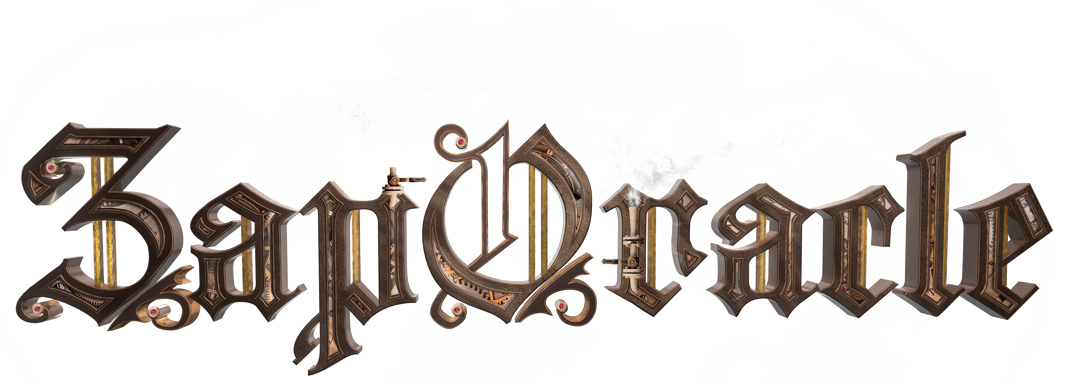 ZapOracle.com home to the free 720-card Zap Oracle
ZapOracle.com home to the free 720-card Zap Oracle

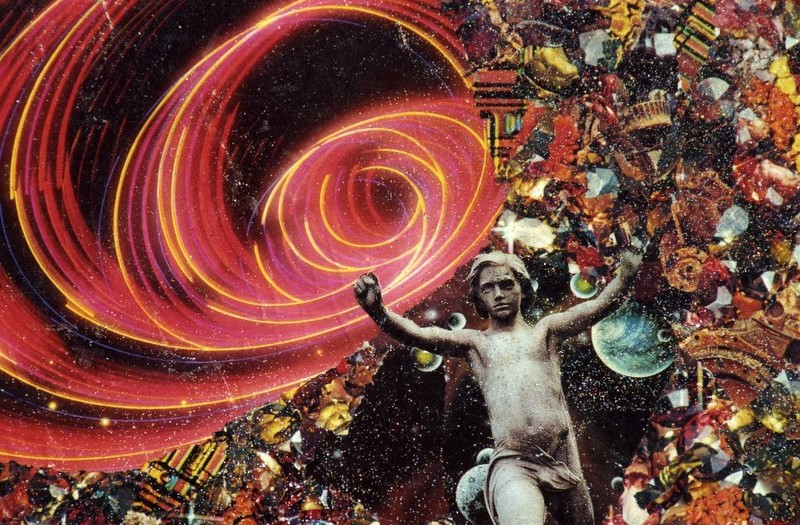

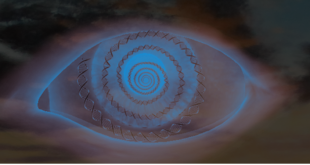
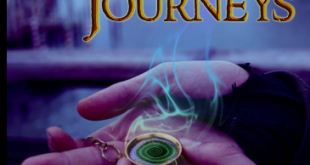
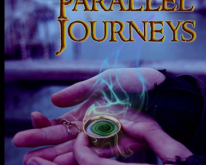
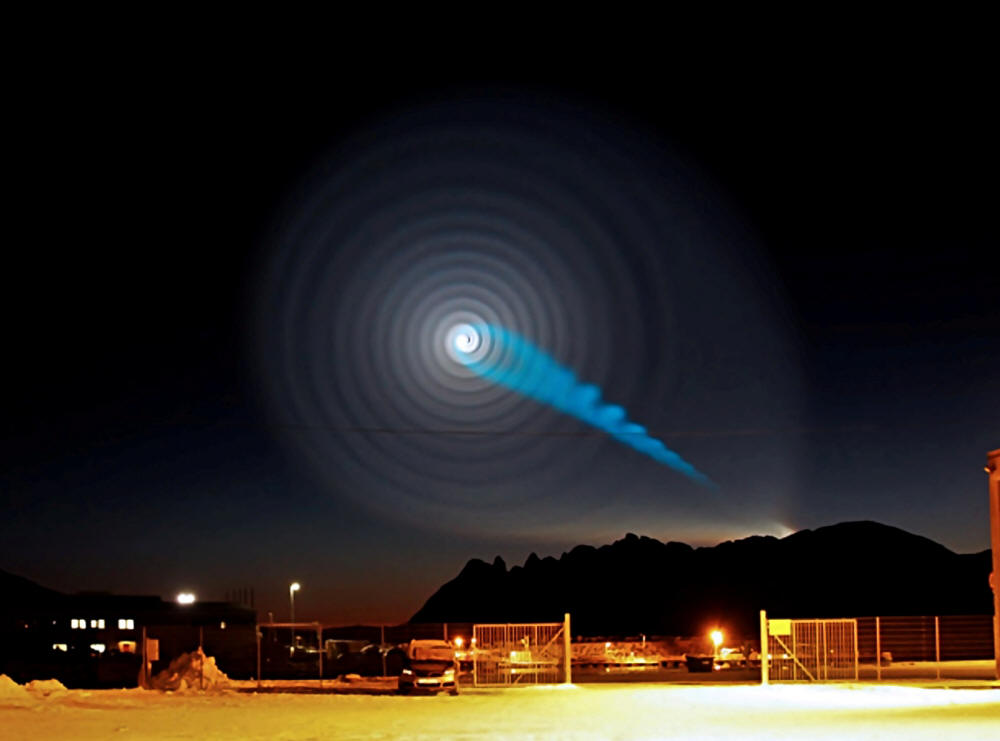

interesting POV. a very good read. enjoying the commentaries on the coming forward of nurturing ideals.
Is our new age becoming irrational and poetic as indigenous people see the world or could the machinery fuse with poetic mind on the way of becoming a machine elf?